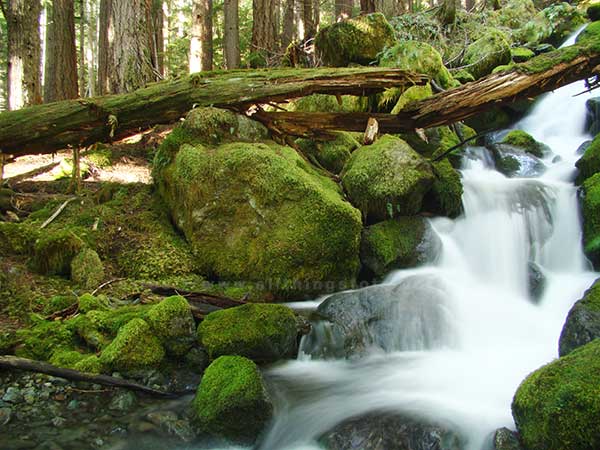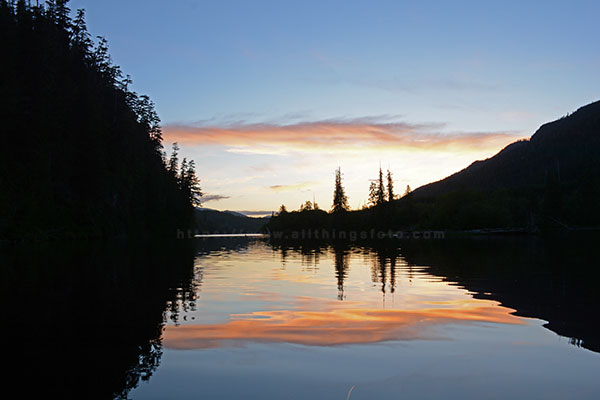The F/8 And Be There Rule In Photography is an often overlooked rule by photographers. It applies to choosing the aperture of f/8 when uncertain of the depth of field (DOF) required for a given situation. F/8 is a middle ground camera setting which allows for most lighting situations.
It was the default aperture in the old days. Old school photojournalists like Arthur Fellig and others used it to narrate crime scenes via a picture. These crime scenes provided sharp images when shot at f/8. For photojournalists it was the perfect aperture.
As a photographer, achieving proper exposure is critical to obtaining great shots. However, ensuring accurate exposure can become challenging when shooting various subjects in varying environments. This is where the F/8 rule comes into play, providing a simple yet effective solution for controlling depth of field while attaining correct exposure.
The F8 rule refers to stopping down (i.e., narrowing) the lens aperture to f/8. The rule helps to balance available natural light, resulting in sharpness across the whole focal plane. The F/8 rule allows photographers to use smaller apertures without sacrificing image quality. Smaller apertures are well suited for landscapes, street photography, weddings and other types of photography.
In this article I dig deeper into understanding the F/8 rule, its significance and how it applies to different shooting scenarios. Consequently enabling photographers to enhance their skills and produce stunning shots with minimal technical details
F/8 And Be There
In photography, being there means not just physically present at a particular location but also mentally focused on observing potential photo opportunities.
It involves recognizing unique perspectives, lighting conditions, expressions, and actions unfolding before your eyes.
Being there represents one of the most crucial aspects of photography because it enables you to create meaningful images that tell stories and convey emotions.
Just by being there you give yourself the opportunity to shoot great shots. Whether it’s during a wedding ceremony, family gathering, sport event, travel adventure or wildlife viewing, F/8 works well in most situations.

Developing a keen sense of awareness and presence when photographing people, places or things requires practice, patience and creativity. The F/8 rule provides a basic starting point for proper exposure and a quality image.
By embracing the importance of being there, you can elevate your photographic abilities and consistently deliver remarkable images that viewers find interesting.
Understanding The F/8 Rule And Be There Rule
How It Relates To Exposure
The F/8 rule is a principle that helps photographers achieve consistent exposure under various lighting conditions. Understanding how the F/8 rule relates to exposure is essential for producing well-exposed photos.
Let’s define the three components involved in exposure – aperture, shutters’ speed and ISO.
Each factor affects the final image differently. For example, altering aperture changes DOF, the shutters’ speed alters motion blur, and ISO influences noise levels.
Balancing ambient light is key to achieving proper exposure. If the scene has adequate natural light with unique subjects, using the F/8 rule can help maintain a balanced exposure. At f/8, you allow enough light through the lens aperture, while keeping the DOF shallow enough to isolate specific areas of interest. This middle ground between too much or too little light makes the F/8 rule versatile across different genres.
Examples Of The F/8 Rule And Different Uses
Landscapes often feature vast open spaces requiring greater DOF. When taking landscape shots, set your aperture around f/8, letting more light in to capture details throughout the frame. The best default aperture for beginners is f/8.

Weddings, another popular genre, have diverse lighting requirements. During ceremonies, indoor low-light technical settings demand higher ISOs, while outdoor receptions may warrant lower ISOs due to abundant daytime illumination. Here, the F/8 rule can still come into play by allowing flexibility within these changing conditions. Adjusting the shutters’ speed compensates for differences in ambient light and keeps the shot properly exposed.
In sports and wildlife photography, where quick movements and sudden changes occur frequently, the F/8 rule can be particularly useful. It allows most photographers to maintain proper exposure regardless of varying lighting conditions, as well as manage subject distances and DOF.

One way the F/8 rule benefits sports and wildlife photography is its ability to capture fast-moving subjects without excessive blurriness. Setting the aperture to f/8 in combination with faster shutters, provides sufficient DOF for background elements while reducing motion blur. Additionally, since many sports events take place outside during daytime hours, the F8 rule allows extra room for natural light to reach the sensor, avoiding the need for high ISO values and potential grainy images.
Another advantage lies in the F/8 rule’s effectiveness in capturing distant objects. Many landscape, sports and wildlife scenes involve far away subjects, making accurate focusing critical. By choosing f/8, photographers increase their chances of acquiring crisp, detailed shots even from afar. Plus, having a wide DOF ensures nearby animals, players and subjects remain in focus, resulting in well-composed compositions.

To apply the F/8 rule effectively, some photographers completely ignore auto mode and choose to shoot in manual mode. Manual mode grants full control over the camera settings. However, if automatic mode must be used, understanding the relationship between these parameters becomes vital. By monitoring the camera’s meter and adjusting accordingly, users can attain appropriate exposure levels despite rapid changes in shooting scenarios.
Overall, the F/8 rule offers valuable assistance in sports and wildlife photography, especially when dealing with rapidly moving subjects and distance variables. Combining knowledge of manual modes and an eye for composition leads to successful results, no matter what the occasion might entail.
Applying The F/8 Rule In Your Photography
Tips For Getting The Best Results
Choosing The Right Focal Length
Choosing the right focal length plays a crucial role in applying the F/8 rule successfully. Photographers should select the most suitable lens based on the desired composition and perspective. Consider whether a wide angle lens, standard lens or telephoto lens would best suit the situation.
Wide angles are ideal for landscapes and group photos, offering an expansive view but sometimes creating distortion. Standard focal lengths work well for everyday use, providing a normal viewpoint that closely resembles human vision.
Telephotos excel at capturing far away objects such as wildlife and athletic competitions, but may struggle with close up shots. Understanding each lens’ capabilities helps ensure the correct one is chosen, leading to perfect shots, improved composition and easy application for the F/8 rule. Ultimately, selecting the right focal length enhances creativity and overall photo quality.
Example Of Adjusting Aperture, ISO And Shutter Speed
Proper usage of the F/8 rule requires careful consideration of aperture, shutters’ speed and ISO.
For example, you want to photograph a mountain range against a bright sky. So you set your aperture at f/8 and let the Artificial Intelligence driven camera set the corresponding technical settings automatically.
Your end result will usually be an underexposed image. Completely ignore your auto settings and try dropping your ISO down to around 200. Then increase your shutters’ speed until your histogram shows adequate exposure.
This combination of a wider aperture, slower shutter speed, and lower ISO works together to create a correctly exposed image while keeping your depth of field intact.
Keep practicing adjustments like this to become proficient using the F8 rule. Remember, always check your exposure before taking a shot!
Showcasing And Analyzing The F/8 Rule In 5 Real World Scenarios
The F8 rule is incredibly useful in various photographic situations, allowing for consistent and balanced exposure across different environments. Here are 4 examples showcasing how it has been applied in real-world scenarios along with explanations for specific camera settings.
Sunset Landscape – When capturing sunsets or sunrises, low light often causes issues with proper exposure. To achieve enough light for a well-balanced image, I sometimes set my digital cameras aperture to f/8. And the shutters’ speed to 1/30 or faster, then the ISO to 320 or higher. By doing so, my entire scene remains visible while maintaining sharpness throughout. Experiment with different shutters and ISO to achieve the good photos you want. A tripod is not to be overlooked in this situation.

Wildlife Photography – When it comes to wildlife photography, the f/8 aperture and the “be there” rule go hand in hand, offering valuable guidelines for capturing stunning images. Wildlife presents unique challenges, demanding careful attention to detail. Setting the camera aperture to f/8, photographers strike a balance between depth of field and shutter speed. Ensuring that the subject remains in focus while maintaining adequate sharpness throughout the frame. The f/8 aperture allows for sufficient light to enter the camera lens, optimizing exposure and preserving crucial details.

Street Photography – Street photographers capture the essence of urban life through their lens. The artistry and focus of street photographers lies in their ability to find beauty in everyday moments. The F/8 rule can be particularly valuable for street photographers since it allows for fast-paced capture of unexpected moments without the need for excessive manual tweaking.
For street photography scenes involving people or public transportation, I use an aperture of f/5.6-f/8. I set the shutters’ speed from 1/125-1/1000 second. And my ISO settings between 80-400 (depending on ambient light). Since I prefer to keep things simple, these camera settings usually suffice for most street photography situations. Street photographers utilize the f/8 aperture setting and leading lines to achieve a balanced depth of field.

Film Photography – In film photography, the F/8 rule helps ensure that all elements remain within the depth of field. A camera lens aperture of f/8 usually does the trick, paired with shutter speeds ranging from 1/250-1/500 second (adjustable depending on sunlight) and ISO 200-400. These camera settings allow for consistent exposure throughout the roll, minimizing chances of missed shots due to incorrect settings. F/8 is definitely the sweet spot for film photography to capture crisp precious moments.
Summing Up Applying The F/8 Rule In Your Photography
While there may be instances where deviation from these camera settings is necessary, the F/8 rule serves as a solid foundation upon which to build one’s portfolio. It fosters confidence and encourages exploration through its simplicity and adaptability. With practice, mastery of these fundamentals leads to better artistic decision-making and ultimately stronger compositions.
These four cases illustrate the importance of evaluating scene requirements when employing the F/8 rule. While adherence to strict guidelines provides consistency, flexibility and thoughtful consideration of context help generate stunning images. Practice analyzing different scenarios and learn to adjust camera settings according to individual needs and objectives.
By examining the unique characteristics of each scenario and understanding the relationship between aperture, shutter speed and ISO, street photographers can effectively apply the F/8 rule to their advantage, ensuring beautifully exposed and composed photographs. Through practice and experimentation, you refine your skills and make informed decisions about setting adjustments based on the circumstances.
So go ahead, give it a try, and see just how versatile and powerful the F/8 rule truly is!
Being There – The Importance Of Location And Timing
Why Location Matters In Photography
As the famous saying goes, “the best camera is the one that’s with you.” But sometimes, having a camera doesn’t necessarily mean capturing the best shots – it also depends on the environment and time spent in those places.
Location and timing are crucial components in creating compelling and memorable imagery. Understanding why location matters in photography involves considering several factors: natural light, background elements, perspective, planning ahead, researching locations, and waiting patiently for optimal conditions.
All of these play critical roles in producing high-quality photographs. Let’s explore each aspect and discover how they contribute to successful photography.
A. Natural Light – Light is perhaps the most significant factor affecting the mood, atmosphere and overall look of a photo. Different times of day offer varying qualities of light, dawn and dusk are known as the golden hours because of their warm glow and long shadows.
Noon light tends to be harsher and flatter, while late afternoon or early morning light often creates more interesting textures and contrast. Learning to work with natural light not only enhances composition but also enables a photographer to produce dynamic visual stories.
B. Background Elements – The surrounding environment has a tremendous impact on a shot, whether it is nature, architecture or urban landscapes. A well-chosen backdrop adds interest and depth, helping viewers imagine themselves in the scene. On the other hand, distracting or unappealing surroundings detract from the subject matter. Proper use of the “Rule of Thirds” helps eliminate this.
When selecting a vantage point, pay attention to what lies behind the main element(s) in the picture. Is it cluttered or chaotic? Does it complement or conflict with the focal points? Answering such questions will improve overall composition.
C. Perspective – A photographer always looks for new angles to showcase their subjects, whether intentionally or subconsciously. Experimenting with perspective is fun and creative, allowing a photographer to present familiar sights in fresh ways. The rule of odds helps by adding intrigue to your photos.
Wide angle lenses allow photographers to capture more expansive views while emphasizing details closer to the camera, whereas telephoto lenses compress distances and isolate specific elements within a larger frame.
Understanding which type of lens works best for each situation helps enhance visual storytelling and foster artistic growth.
D. Planning Ahead and Researching Locations – Preparation plays a vital role when working with fixed destinations rather than the random places one encounters. Before heading out, study potential sites using online maps, guidebooks, social media or even Google Street View. Identify a particular site, key features, popular spots and alternative routes to reach them.
This knowledge will help determine appropriate gear, anticipate weather conditions and plan backup options if needed. Remember that flexibility is still important during site visits. Be open to serendipity by observing changing light, temporary events or hidden treasures along the way.
While preconceived ideas might dictate initial expectations, stay receptive to new opportunities arising during the journey itself.
E. Timing is Everything – Patience is an underrated virtue in our hectic world, yet this quality contributes significantly to the success of many photographers. Waiting for ideal conditions for taking pictures also means being ready beforehand, understanding the desired outcome and exercising discipline once there.
Observing light patterns, cloud formations, wildlife behavior, pedestrian traffic or anything else relevant to the image requires attentiveness and diligence. Some opportunities occur rapidly, like catching a candid expression or capturing action sequences.
Other occasions demand persistence, such as waiting for perfect sunset hues or a rare animal encounter. By remaining alert and prepared, the likelihood of securing memorable shots increases exponentially.
F. Combining the F/8 Rule and Being There – Now we come full circle to merging technical competency and environmental awareness. The F/8 rule provides a basic framework for ensuring adequate exposure under various lighting scenarios.
However, utilizing proper camera settings alone cannot guarantee a stunning shot. It takes patience, perseverance and sensitivity to the environment to create perfect pictures that convey deeper meaning beyond their technical qualities.
Photographers must learn to observe their surroundings intently, pay attention to subtleties often missed by other photographers and discern moments worth capturing.
By combining thoughtful composition with careful execution, they can transcend simple documentation and express something profound or beautiful about the places they visit.
G. Choosing the Right Moment to Press the Shutter Button – In addition to all previously discussed technical aspects, knowing when to click the shutter button can make or break your photographs. Often, it’s better to wait longer than expected, watching for the decisive moment that elevates your image above others.
Anticipating subtle changes in facial expressions, body language or scenic transformations requires patience and practice. Alternatively, some instances warrant rapid responses to capture fleeting occurrences like sunrise or sunset reflections. Either way, learning to recognize potentially compelling situations develops instinctively over time through experience and observation.
In conclusion, “why location matters” encompasses multiple interconnected dimensions influencing the resulting photographs. From natural light and background elements to perspective, planning ahead and timing, every variable interacts synergistically within its unique context.
Mastering these elements does not imply total control over external variables but increased confidence in adapting to unexpected circumstances. Whether exploring familiar haunts or embarking on unknown adventures, keep experimenting and expanding your skills to fully appreciate why location truly counts in photography.
With dedication and passion, anyone can transform ordinary scenes in life into extraordinary memories worth cherishing forever.
F/8 And Be There Rule In Photography Summary
The F/8 rule has been around since the early days of photography, providing guidelines for achieving consistent results across varying lighting environments without requiring complex calculations. By using f/8 as a baseline default aperture setting, photographers can balance depth of field, sharpness, and overall exposure.
This concept remains just as applicable today, particularly given advances in digital technology that enable greater flexibility in post-processing. Nonetheless, mastering the nuances behind the F/8 rule calls for deliberate effort and practical application.
Recap of Main Points Covered
Photography should inspire exploration and personal growth, even if pursued casually rather than professionally. Embracing the principles outlined in this guide allows a photographer to improve their work noticeably with minimal investment other than time and curiosity.
Experiment with the F/8 rule in diverse locations, considering the impact of focal length choice, subject distance and light direction. Learning to recognize suitable aperture values comes naturally via hands-on practice, so don’t hesitate to test things out.
Moreover, incorporating the idea of being there – whether mentally or physically – strengthens emotional connections to photographs, making them far more memorable in the long run.
Final Thoughts on Continuous Improvement and Experimentation in Photography
As artists, we never stop learning, growing and pushing ourselves to innovate. Embrace this spirit and keep challenging yourself with new techniques, equipment choices and creative ideas. Remember, mastery comes from constant repetition and iterative refinement, so find joy in the journey itself.
Additionally, always maintain an open mind towards constructive criticism or alternative perspectives, remaining receptive to feedback from peers or clients alike. By adopting such an attitude, your skillset will evolve organically alongside changing trends and advancements, ensuring sustainability in a competitive industry.
So, embrace uncharted waters fearlessly, confident in your abilities yet humble enough to acknowledge areas ripe for development.
